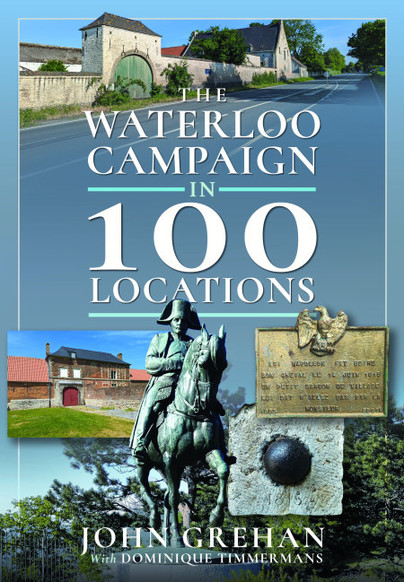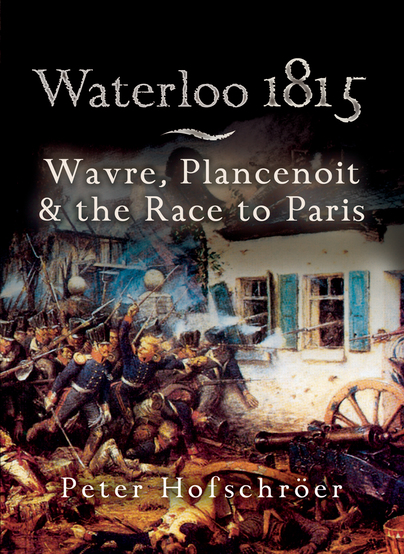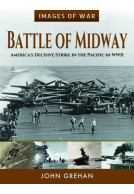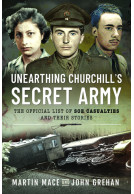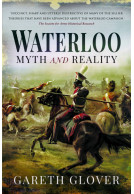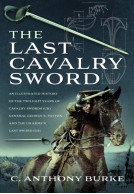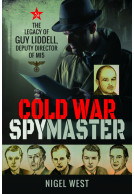The Waterloo Campaign in 100 Locations (Hardback)

Pages: 240
Illustrations: 100 b&w llustrations
ISBN: 9781526746917
Published: 20th September 2023
(click here for international delivery rates)
Order within the next 11 hours, 26 minutes to get your order processed the next working day!
Need a currency converter? Check XE.com for live rates
| Other formats available - Buy the Hardback and get the eBook for £1.99! | Price |
|---|---|
| The Waterloo Campaign in 100 Locations ePub (160.9 MB) Add to Basket | £6.99 |
In the 200 years since the famous battle in the muddy, bloody fields of Waterloo, almost every aspect of the fighting has been examined and analysed, apart from one – that of finding and illustrating locations relating to the campaign. From Napoleon’s landing on the Golfe Juan on France’s Côte d’Azur, along the Route Napoleon and through Grenoble, the Emperor’s journey back to Paris, and back to power, is revealed here.
In this beautifully produced book, we see where Napoleon distributed the Imperial Eagles to the regiments of his army, and where his forces assembled before marching to war, and where the Due of Wellington’s Anglo-Allied army gathered in Brussels. The camera follows the initial encounters on the banks of the River Sambre and the manoeuvring of the French and Coalition forces leading to the first great battles of the campaign at Quatre Bras and Ligny. The key sites occupied by the opposing armies at these battles are investigated as are the routes of the withdrawal to Mont St Jean by Wellington’s army and to Wavre by Blücher’s Prussians.
The Waterloo battlefield and its associated buildings are examined in pictorial detail, as are the locations which marked the pivotal moments of the battle. The sites of the corresponding battle at Wavre are also shown, as well as the pursuit of the two wings of beaten French Army, including the sieges of the fortresses by the British army, before Paris was finally reached. The uprising in the Vendée and the last clashes of the campaign before Napoleon’s abdication are also featured.
The book closes with Napoleon’s journey from Paris to St Helena via l'Île d’Aix and Plymouth.
Headquarters buildings, observation posts, monuments and memorials, bridges and battlefields, and the principal locations of the campaign are portrayed in unique photographs – and behind every plague and place is a tale of political posturing, military manoeuvring, sacrifice and savagery. Together these images tell the story of Napoleon’s greatest gamble, and we know that a picture is worth a thousand words!
BOOK REVIEW
The Napoleon Series
Highlight: 'Examining a subject in 100 objects or locations is a popular genre these days, and this book has fulfilled that remit very successfully. This is a useful guide to anyone planning a visit to the area and is recommended reading.'
Available to read in full: https://www.napoleon-series.org/book-reviews/books-on-military-subjects/the-waterloo-campaign-in-100-locations/
This is not another history of the campaign, but a collection of photographs of places and memorials relating to the Waterloo Campaign which ‘best tell the story of Napoleon’s last campaign,’ arranged in a broadly chronological sequence, with text accompanying each illustration ‘to place each location in its historical context.’ The dustjacket states: ‘From Napoleon’s landing … and back to power, is shown here in glorious full colour.’ That was the original intention, but John Grehan has informed me that the publishers decided colour would be too costly, so - apart from the dustjacket - all the illustrations are black and white. He has been told the ebook will be in colour.
Arthur Harman, Miniature Wargames
Each location is identified by its address and its ‘Map Coordinates’ – actually its latitude and longitude in both traditional and decimal forms – and portrayed by at least one photograph or other illustration, often more than one, and a minimum of about a page of text. References to endnotes are given in the text.
Many of the locations will already be familiar, if only in name, to wargamers from their reading on the campaign, but some will not. I had not realised, for example that one can still visit the very tree – which has since become known as l’arbre de la Trahison – where General Louis-Auguste-Victor de Bourmont, commander of the 14th Infantry Division, decided to desert to the Prussians with his staff and information of Napoleon’s intended movements on 15th June 1815.
A few locations which are no longer standing, such as the Chateau de Fichermont, or have changed dramatically, like the hamlet of Mont-Saint-Jean, are represented by earlier photographs or reproductions of contemporary prints. There is a modern photograph of one of the suggested sites of the house where the Duchess of Richmond’s ball was held and a plan of the house from the biography of her daughter, Lady Georgina de Ros.
The vast majority of the photographs of memorials are sufficiently clear for readers to see their inscriptions; in some other cases a transcription is provided. The last two locations are the Lion Mound and Napoleon’s tomb in Les Invalides; a photograph of Longwood House on Saint Helena also appears in the latter section.
Two pages are devoted to the merits of various Waterloo guidebooks, which will be very helpful for any readers who have been inspired to visit the campaign area for themselves. Three pages contain the sources for the endnotes in the text.
The book concludes with a three-page index of persons mentioned in the text, not always in strict alphabetic order; for example, Blucher precedes Blackman, Bourmont comes before Boreel and Bourgeois, and Halkett before Haines.
This book, provided it was accompanied by one of the recommended guidebooks, would be extremely useful to someone undertaking a self-guided tour by car or motorcycle of the theatre of operations and the battlefields of the Hundred Days campaign. As John Grehan states in his introduction, ‘it does not pretend to be in any way a full account of the Waterloo campaign,’ but the text contains much interesting historical information. The photographs of surviving buildings will also be useful for wargamers wishing to portray them on their miniature battlefields. Normally I prefer proper books, but in this case I would recommend the ebook version.
As featured in
VaeVictis Magazine, November 2023
"Examining a subject in 100 objects or locations is a popular genre these days, and this book has fulfilled that remit very successfully. This is a useful guide to anyone planning a visit to the area and is recommended reading."
Paul Chamberlain - The Waterloo Journal and The Napoleon Series
About John Grehan
JOHN GREHAN has written, edited or contributed to more than 300 books and magazine articles covering a wide span of military history from the Iron Age to the recent conflict in Afghanistan. John has also appeared on local and national radio and television to advise on military history topics. He was employed as the Assistant Editor of Britain at War Magazine from its inception until 2014. John now devotes his time to writing and editing books.
Waterloo 1815 Wavre, Plancenoit & the Race to Paris (Paperback)
Histories of the Waterloo campaign and tours of the battlefield generally concentrate on the battle between the armies of Napoleon and Wellington - the role of Blu[umlaut]cher's Prussians is left in the background. Peter Hofscho[umlaut]er's fascinating account focuses on the Prussians and on this critical but often neglected side of the great battle. He tells the story of the gruelling Prussian advance towards the battlefield and the records the ferocious and decisive fight that broke out when they arrived. At every stage he allows the reader to follow in the footsteps of the Prussian soldiers…
By Peter HofschroerClick here to buy both titles for £37.99







